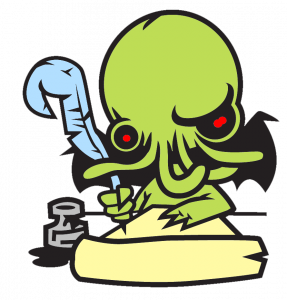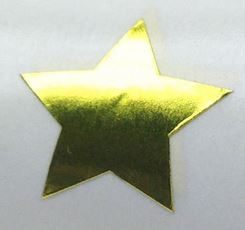
Welcome! Today’s the first weekly check-in for my Make Art Not War 2017 Challenge. Many of my fellow challengers are using the hashtags on Twitter and Facebook (#makeartnotwar2017 #manw2017) and posting works in progress or art they’ve made. As the visibility for this challenge continues to grow, I want to remind you that you can join at any time. There’s no sign up, and the rules are designed to help you stick with it and keep making art.
How are you doing? I don’t know about you, but my creativity is exploding. I feel the enthusiasm and creative energy you all have, and I’m feeding off of it to experiment and channel it into every aspect of my life to focus on doing, doing, doing. I’ve made three pies so far (Ahem. I LOVE pie!), I’ve designed, torn apart, and am restitching a MANW bracelet, I’m neck deep in character creation, and I feel little pops of “Oooo… I could do…” all over the damn place. In other words, I am embracing this month’s theme–PLAY–fully and in every sense of the word.
The last tatters of whatever filter I had are burning away, and what I’m left with is (my Italian/musical friends will understand this) a feeling of “il più forte”. I am loud, and I am getting louder. It is reflected in my prose, it’s mirrored in this blog, and it’s definitely impacting the way I feel. The passion that burns within me wants to come out, and that’s definitely resonating.
I’d love to hear from you, so feel free to post your thoughts in the comments below.
Tracking and Adjusting for Missed Days
 To keep track of my challenge efforts, right now I’m using a super simple system to ensure I’m sticking (Hah! Hah!) with this. I picked up some gold star stickers, and for every day I fulfill the challenge I add one to that date on my calendar. The cost is less than $5 for stickers like these, and you can find them at Michael’s, Amazon.com, Staples, Oriental Trading Company, etc. If you can’t pick up stickers (or don’t want to use them), drawing stars or smiley faces in a bright (e.g. non-black) color works just as well. The result? You’ll keep adding stars, hearts, etc. and have a visual, clear picture of the days you’ve made art so far. Awesome, right? So far, so good for me!
To keep track of my challenge efforts, right now I’m using a super simple system to ensure I’m sticking (Hah! Hah!) with this. I picked up some gold star stickers, and for every day I fulfill the challenge I add one to that date on my calendar. The cost is less than $5 for stickers like these, and you can find them at Michael’s, Amazon.com, Staples, Oriental Trading Company, etc. If you can’t pick up stickers (or don’t want to use them), drawing stars or smiley faces in a bright (e.g. non-black) color works just as well. The result? You’ll keep adding stars, hearts, etc. and have a visual, clear picture of the days you’ve made art so far. Awesome, right? So far, so good for me!
Please remember: what you get out of this challenge will be what you put into it. There is NO judgement happening on my end, because for many of you it’s difficult to make art every day. The challenge is here to help you be your best! If you miss a day, try writing down the reason why you missed it. To get back up to speed, take your allotted time and split it in half. Then, figure out what you are giving up: maybe it’s a half an hour of TV or gaming, maybe it’s chatting on Twitter, maybe it’s reading the news. It’s amazing where that time goes, and figuring that out will help you long-term.
Making Art as an Act of Protest
Following the election, I’ve seen a lot of discussions about what it means to make art when the pendulum swings toward extremism or fascist regimes. Regardless of your thoughts on the subject of our current political climate, the idea that there is “one way” to be is incredibly dangerous for many, many reasons. If “man” and “woman” wind up putting a single image in people’s heads, it sets an impossible standard for hundreds of millions of people who don’t live up to that. When impossible standards fall down, that’s when people get hurt because bullies become emboldened. Victims say: “You’re hurting me. I’m me, I can’t be that perfect image. Please don’t do (or say) that again.” A bully says: “I don’t believe you. It’s your fault if you don’t measure up. You’re imagining the pain I caused. You’re weak. You’re making it up for attention. Trust me, I know what’s best for you.” And so on, and so forth. It becomes “us vs. them” because the “us” doesn’t accept that the “them” will step into line and follow their lead no matter what. Unfortunately, there is no such thing as “us”, because there’s no such thing as the ideal or perfect human being.
Because the truth of who we are as individuals is far more complex than an idyllic image, I feel that making art is one way to attest to our true selves and our identities. Your art, whether you intend it to be or not, is a statement. Being present in who you are and sharing your art with the world–even in the face of rejection and hatred or through the vehicle of commercialism–that is an act of defiance. That is you saying: “Here I am. This is the art I made. I hope it makes you laugh, cry, dream, hope, wonder, think differently about me, recognize my humanity, empathize, etc.” How far you draw out that innermost part of yourself in your art, either consciously or unconsciously, is always up to you. Regardless, at the bare minimum, anything you make–from knitted socks to a painting of the statue of liberty crying–shows that you were here.
Lastly, I want to mention that fighting for the right to exist is not a privilege and it’s not exciting to me. It’s necessary. This struggle is not new, and unfortunately artists don’t have the power to stop wars on the battlefield. We do, however, have the ability to affect hearts and minds of survivors and victims, and that is what we’re often called to do in times of spiritual, moral, and physical conflict. Now that a fresh round of conversations about worker’s rights, health care rights, refugee rights, LGBTQA+ rights, and women’s rights are in the public eye again along with talks about ethnocentrism and patriotism, it suddenly feels as if the apathetic masses (a.k.a. the proverbial zombies) are waking up to fight. The reality, however, is that some people have been fighting all along, and this is especially true for people who hail from traditionally marginalized or underrepresented groups.
Creative Prompts: Personify Your Rage & Envision a Futuristic Habitat
What we’re experiencing as artists is a hot mess of feelings stemming from a cultural zeitgeist that many of us cannot ignore. This spirit of the times will influence our art to varying degrees; it could result in characters yelling, a sub-plot about oppression, a bleak landscape or photograph, etc. It could, if we’re not careful, also result in inaction and an unwillingness to make art. Why bother? What power does an artist have? How can we, the small and the unknown, make a difference? For all these reasons and more, this is why I mentioned how important it is to protect the work–especially if you cannot allow anger and fear to seep its way in. By protecting the work, you wind up doing something else: you protect your heart, too.
In light of this, I have two creative prompts for you today that tackle both ends of the emotional spectrum. The first helps those of you who are angry to embrace that feeling, to get it out of your system, and to attest and affirm your emotions.
Creative Prompt: Personify Your Anger
Anger is often viewed as a negative feeling, especially if we allow it to go too far (e.g. Pyrrhic victory), but it is also transformative. Often, anger and rage are attributed to the masculine and the strong; if you’re not the Hulk, for example, you cannot be angry. Anger, however, is a human emotion that every last one of us has the capacity to feel. Our personification of this emotion, is what informs our comfort level with it. It is the fire elemental that dances on a field of flowers turning beauty into ash; it is the phoenix that destroys itself in an endless cycle of destruction and renewal. When we douse the flames, we feel empty, hollow, and full of guilt. And yet, our anger pushed something out of the way so a seed can sprout in its place. That seed, fragile and precious and full of life, could not exist if it weren’t for our anger.
For this prompt, personify your rage and turn it into a character. You could:
- Draw fan art of Phoenix, Ghost Rider, the Human Torch. Don’t be afraid to gender-bend or play with costumes!
- Sketch a political cartoon
- Cross-stitch a phoenix
- Knit or crochet a dragon
- Write-up a new character
- Paint yourself in the heart of a volcano
- Write a heavy metal/industrial song
What does your rage look like? For me, that personification turned into a modern version of the Greek Furies. I developed internet furies who survive off of ‘net rage for Gods, Memes, and Monsters to channel my feelings into monsters. Yours could be completely different. It could be a terrifying beast, a mutant, or a force of nature. By personifying it, you’ll identify what your anger looks like and have a visual of this personal aspect of yourself.
For those of you who aren’t feeling angry right now, my second creative prompt is to create art that taps into your hope and forces you to imagine a better future.
Creative Prompt: Envision an Ideal Habitat
Post-apocalyptic and dystopian futures are all too common when the cultural zeitgeist carries doom and gloom, and that can influence the stories we tell. I suspect that the creation and demand for horror, dark science fiction, post-apoc, etc. will begin to swell again, because dark futures are a means of exploring our deepest fears to show us how we can survive. For others, especially myself, the exact opposite is true: we need messages of hope to understand that a brighter, better future is possible.
This prompt explores your vision, and draws upon your hope. Even if you have just a tiny bit of it, as long as you have the desire to tap into that positive emotion, this prompt could be a lot of fun for you.
To envision a futuristic habitat, think about what an ideal home might look like in five hundred years. Then, use your talent to bring that vision forth. Here’s some suggestions! You might:
- Design a Rube-Goldberg house
- Use LegosTM to build a futuristic space habitat
- Be inspired by NASA’s work and create a deep space habitat
- Pick your favorite flower or vegetable and use that as the inspiration for a totally green, non-synthetic home.
- Choose your favorite animal. Instead of a habitat for humans, what would a futuristic home look like for them?
- Challenge yourself by writing a few restrictions down before you start. For example, you might note that your habitat has to be completely self-sustaining, made only of synthetic, recycled, or organic materials, or has a low manufacturing cost.
Whether you use whimsy or utility, designing a futuristic habitat forces you to reach outside of yourself and place your faith in a better tomorrow. It still utilizes your emotions, but in a different way to problem solve and create a pie-in-the-sky scenario.
That’s it for today, dear readers. Don’t forget to check in if you’re taking this challenge!
Mood: Out of f*cks
Caffeinated Beverages Consumed: Four cups of coffee.
Work-Out Minutes Logged Yesterday: Pissed I haven’t gotten to the gym.
In My Ears: “Let It Go” by Idina Menzel for Frozen
Game Last Played: Dragon Age: Inquisition
Book Last Read: Research materials for work.
Movie/TV Show Last Viewed: Star Wars: Return of the Jedi
Latest Artistic Project: Make Art Not War 2017 Challenge and Rules
Latest Releases: Read my end-of-the-year list of releases for an overview of what I’ve put out for 2016. Check out Upside Down: Inverted Tropes in Storytelling and, if you like it, consider leaving a review.
Current State of Projects: Read my latest project update.



 To keep track of my challenge efforts, right now I’m using a super simple system to ensure I’m sticking (Hah! Hah!) with this. I picked up some gold star stickers, and for every day I fulfill the challenge I add one to that date on my calendar. The cost is less than $5 for stickers like these, and you can find them at Michael’s, Amazon.com, Staples, Oriental Trading Company, etc. If you can’t pick up stickers (or don’t want to use them), drawing stars or smiley faces in a bright (e.g. non-black) color works just as well. The result? You’ll keep adding stars, hearts, etc. and have a visual, clear picture of the days you’ve made art so far. Awesome, right? So far, so good for me!
To keep track of my challenge efforts, right now I’m using a super simple system to ensure I’m sticking (Hah! Hah!) with this. I picked up some gold star stickers, and for every day I fulfill the challenge I add one to that date on my calendar. The cost is less than $5 for stickers like these, and you can find them at Michael’s, Amazon.com, Staples, Oriental Trading Company, etc. If you can’t pick up stickers (or don’t want to use them), drawing stars or smiley faces in a bright (e.g. non-black) color works just as well. The result? You’ll keep adding stars, hearts, etc. and have a visual, clear picture of the days you’ve made art so far. Awesome, right? So far, so good for me!